Vmedvil
Banned for blowing margins instead of minds...
Posts: 42
Registered: 4-9-2017
Member Is Offline
Mood: No Mood
|
|
Energy to Protein Biochemistry
There are several basic parts that each cell contains just like our bodies, the organelles are needed organs for the cell to live, all this
information must be contained within their DNA.
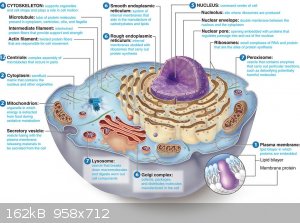
I am not going to go through the function of each of this organelles that is something for a biology 101 class, but rather tell you the biochemical
pathways that make these structures within the cell.
Power System Mitochondria
Energy Metabolic Pathway
This goes from Glucose to Pyruvate the entire biochemical pathway all done with a Sythase protein.
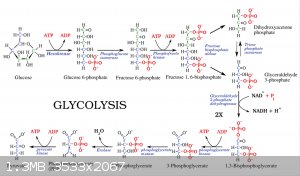
Energy Processing Pyruvate to NADH+ Biochemical protein processes.

Then using the Electron Transport Chain proteins in the wall of the Mitochondria the cell processes this NADH+ into Faramate and Water.
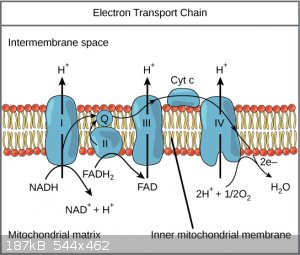
This is the final biochemical pathway from which using ATP Synthase ADP is converted into ATP, the entire process happens within two protein membrane
constructed by a gene.

So now we have a source of Power, for the cell this system will cause most of the metabolic functions in the cell to be catalyzed by enzymes which use
ATP to function.
One of these is the Ribosome which makes all the proteins in the cell.
DNA to Protein Information Transport system
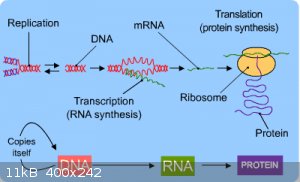
The First part of this that is needed in the system is the ability for DNA to Replicate done by a DNA Polymerase

The DNA is put into a super coiling due to a set of proteins in the nucleus
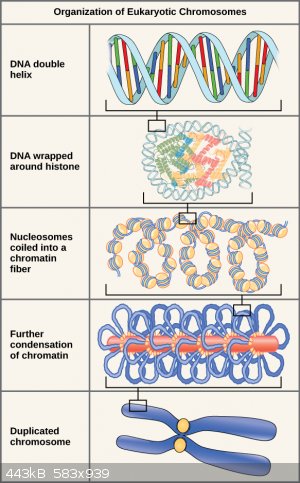
The DNA can be converted into mRNA via a RNA Polymerase.
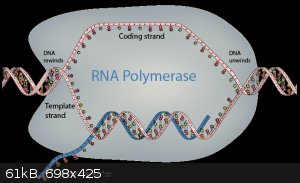
I want you to notice in Translation Process that tRNA proteins are doing the work of moving the Amino acids into the ribosome with the correct
Anti-codon, The ribosome is made up of four sub units proteins that do the function of Protein Synthesis.
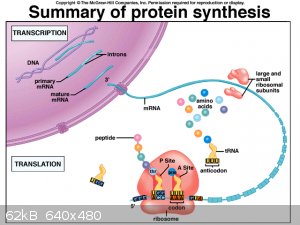
|
|
|
Metacelsus
International Hazard
    
Posts: 2531
Registered: 26-12-2012
Location: Boston, MA
Member Is Offline
Mood: Double, double, toil and trouble
|
|
Vmedvil: You seem very interested in biochemistry, but your knowledge is still incomplete. If you want, I can suggest some resources to help you
improve.
Anyway, I noticed some incorrect information in the above post:
More than one protein is necessary for glycolysis. I suggest you review: https://en.wikipedia.org/wiki/Glycolysis#Interactive_pathway...
Strictly speaking, an RNA polymerase does not convert DNA into RNA. Instead, it uses the DNA as a template to synthesize a new strand of RNA.
Quote: Originally posted by Vmedvil  |
I want you to notice in Translation Process that tRNA proteins are doing the work of moving the Amino acids into the ribosome with the correct
Anti-codon
|
tRNA molecules are not proteins; they are RNA.
Ribosomes contain both proteins and rRNA, but the actual parts that catalyze peptide bond formation are rRNA, not proteins.
Also, ribosomes usually have 2 subunits, not 4.
|
|
|
Vmedvil
Banned for blowing margins instead of minds...
Posts: 42
Registered: 4-9-2017
Member Is Offline
Mood: No Mood
|
|
That First one was a typo i meant to say a "Set of Sythase" Proteins meaning many proteins that do a synthesis of some chemical into another. as for
a count them is a set of 20 proteins that start certain reactions.
tRNA proteins are Transfer proteins that carry the amino acid into the Ribosome, they have RNA bases on them but are very much a class of protein,
they are a type of transporter the tRNA , which means tRNA as RNA transporter. It has been cut into this shape by the transporter protein to send it
physically to the Ribosome.
They have Four subunits in the gene structure and how they are produced, there is two large and two small subunits that fuse into the Large and Small
subunit which is the fusion of one of the smaller large and small subunits, when actually made.
|
|
|
CRUSTY
Hazard to Others
  
Posts: 138
Registered: 5-6-2016
Location: Nearby
Member Is Offline
Mood: High-Order
|
|
Quote: Originally posted by Vmedvil  |
tRNA proteins are Transfer proteins that carry the amino acid into the Ribosome, they have RNA bases on them but are very much a class of protein,
they are a type of transporter the tRNA , which means tRNA as RNA transporter. It has been cut into this shape by the transporter protein to send it
physically to the Ribosome. |
tRNA is not a protein, nor is tRNA a protein when bound to an amino acid. The tRNA-amino acid molecule only contains one amino acid, which is
therefore not bound to another amino acid. As such, it does not constitute a polypeptide and is not a protein. A molecule bound to an amino acid is
not a protein; these are very common in chemistry and pharmaceuticals, but are not classified as proteins (for example lisdexamphetamine).
|
|
|
Vmedvil
Banned for blowing margins instead of minds...
Posts: 42
Registered: 4-9-2017
Member Is Offline
Mood: No Mood
|
|
Well, I just classified it as a protein my bad, if that is incorrect information, It seems that even I can not perfectly explain biochemistry, I did
not realize that it was classified as not a protein even when bound to a amino acid. I thought it was a protein because 99% of the time anything that
does work in a cell is a protein. I do see now that it does not use a transporter protein as I thought. http://ib.bioninja.com.au/_Media/trna-structure_med.jpeg
|
|
|